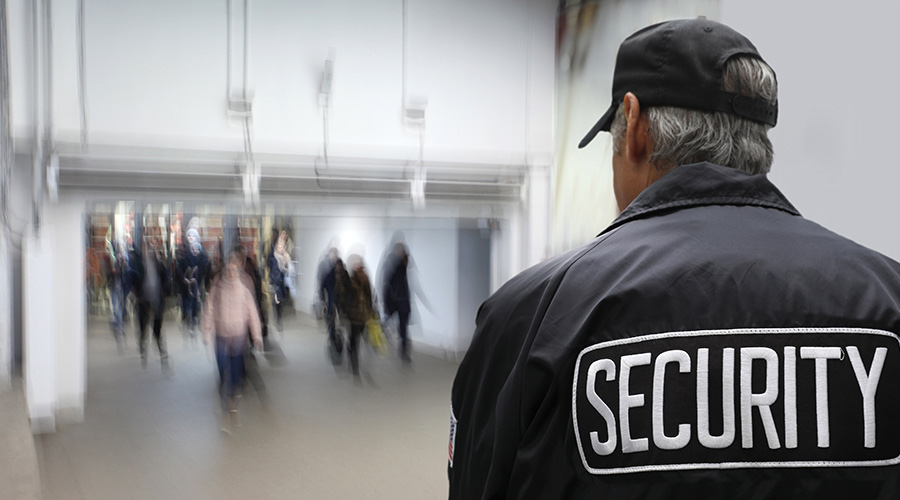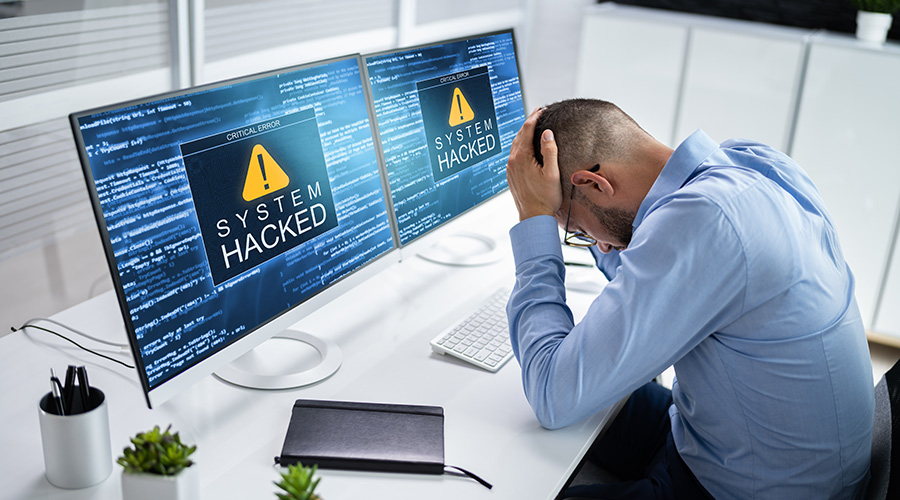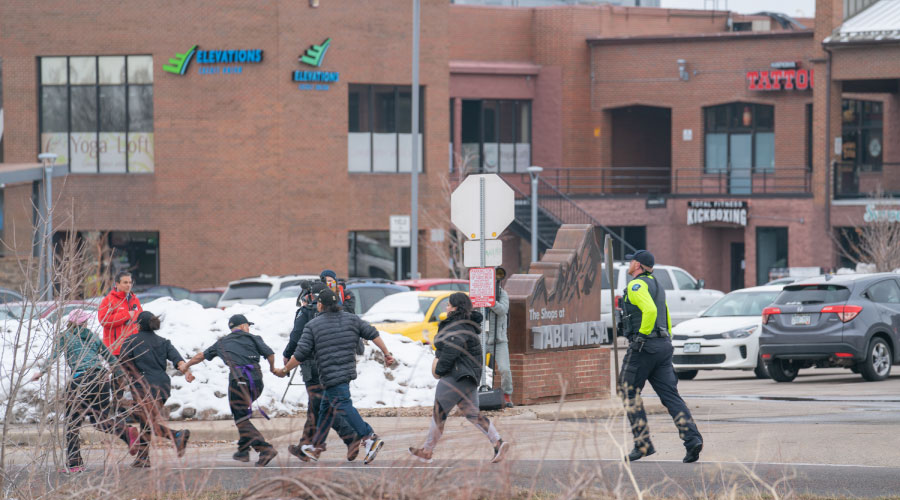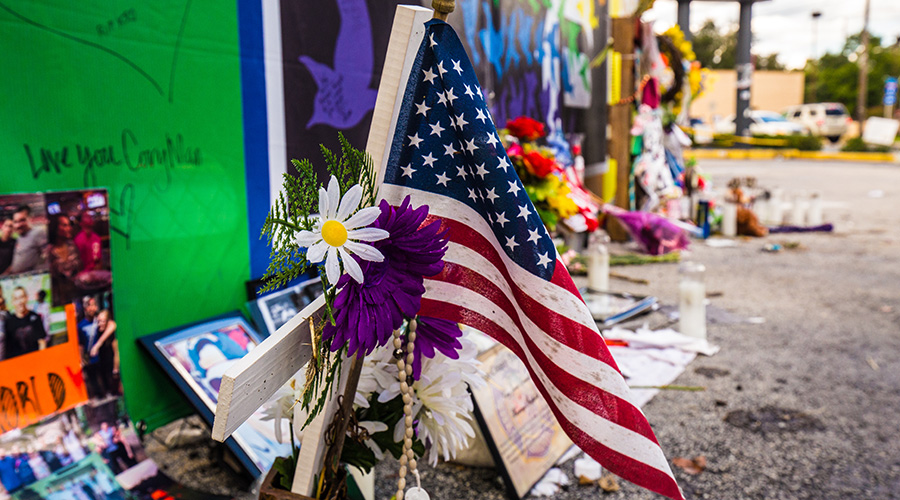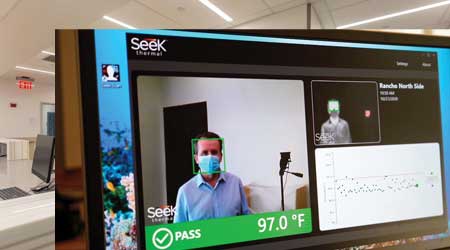 Santa Monica Seafood installed thermal imaging cameras at its facilities to help with the task of checking temperatures of its employees.Santa Monica Seafood
Santa Monica Seafood installed thermal imaging cameras at its facilities to help with the task of checking temperatures of its employees.Santa Monica SeafoodPandemic Temperature Checking Process Boosts Efficiency
Santa Monica Seafood’s investment in scanning devices speeds up process, reduces COVID infection risks.
By Dave Lubach, Associate Editor
While many businesses closed at the outset of COVID-19 in March 2020 while trying to understand what the next steps were in dealing with the pandemic, Santa Monica Seafood, a food processor and distributor, was considered an essential business and not among them.
The challenge the company faced was how to remain open while preventing COVID outbreaks from impacting operations. The company’s employees and management heard about outbreaks at other food manufacturing companies across the country and were justifiably worried about their own safety.
“Our employees were seeing some of the breakouts in those plants in the Midwest, where people were standing shoulder to shoulder,” says David Richardson, the vice president of innovation and compliance at Santa Monica Seafood. “We don’t have people quite as congested as that, but we have people in our business where fish is hand cut, where people are working close together.”
With operations in five states — California, Arizona, New Mexico, Nevada and Illinois — Santa Monica Seafood is the largest seafood processor and distributor in the southwestern part of the country and one of the major suppliers in the U.S. Even a brief shutdown of operations due to a COVID outbreak could negatively impact the company’s future.
Checking temperatures an issue
Like most of the country, the realization that COVID-19 would impact Santa Monica Seafood’s operations started in March 2020, when six counties in Northern California locked down for the first time. The company’s primary operations are located in Los Angeles.
“In the food industry, one of the things that came out of the (pandemic) early on was that if you were somebody coming into a facility, building or store, that you were going to have your temperature checked,” Richardson says. “Having a fever of 100.4 degrees Fahrenheit or higher was very soon at the beginning of the pandemic being designated by the CDC as a classic sign of being positive for COVID-19.”
As an essential business, many of the company’s employees continued working on-site. Some office staff worked from home but most of the company’s employees continued working on the floor at the Los Angeles facility. But finding a way to check employees’ temperatures and doing it safely was going to be a challenge.
“How are we going to check 300 people’s temperatures every day, and maintain things like social distancing, not just from the people who are waiting to have their temperature checked when they arrive at work, but also for the folks who are using the remote contactless thermometers?” Richardson says.
“With the contactless thermometers, you have to be standing less than 6 feet from somebody when you use them, and we were a little bit stumped as to how to do this effectively and without it being counterproductive and having workers standing around in areas that were not designed for 6-foot social distancing, waiting to have their temperature checked.”
The company’s first response to the temperature check question was to use contactless thermometers. The process was challenging because of the facility’s layout, which covers 130,000 square feet and includes 10 receiving and shipping docks and three major entrance areas into the plant — two for visitors and contractors and one for employees.
Not only were employees at risk of contracting COVID-19 from standing around waiting to be tested, staff assigned to check temperatures also saw their risk of infection increasing. Production was also affected.
“We had to build these sort of shields that policemen wear when they go on riot duty,” Richardson says. “(The shields were) something to create some sort of protection because they were within 6 feet of people. It was very awkward and time-consuming, very slow. People were starting their shifts 10, 15 minutes late. We were doing the best we could.”
Fast solution
As Santa Monica Seafood employees continued taking temperatures with contactless thermometers, Richardson knew there had to be a better way.
A business associate told Richardson about a company, Seek Thermal, which makes thermal imaging sensors. The company’s SeekScan product offered no-touch scanning for body temperatures and offered a perfect solution, Richardson says.
“We reached out to them to get some trial units, because the other thing that became obvious was we were able to process people much quicker when they arrived at work,” he says. “(Before) we had multiple people standing there with contactless thermometers and we’d have to manage it so that we could keep people 6 feet apart.”
The cameras helped solve the company’s problem of staffing temperature checkpoints at the three entrances to their main Los Angeles facility. Instead of requiring a handful of people to stand at the entryways and take temperatures, the company had employees stop at the camera to be scanned for their temperature. If the employee’s temperature was below 100.4 degrees, the monitor went green and they could continue on to their work stations. If the temperature was above 100.4, the screen went red and the employee would have to be removed from the premises.
Employees still were needed to monitor the entrances, but were not required to come into contact with co-workers while taking temperatures. By installing the cameras, the company also did not need to train employees on how to operate them.
“It was very easy to install,” Richardson says. “We did in our operation have somebody close by the equipment and most times when it was being used, whether it was reception staff or security staff, but it wasn’t because the equipment needed it. It was more to do with the handling of anyone who arrived and tripped the temperature level.
“They had already pre-programmed it with a max of 100.4 Fahrenheit, and if anybody registered higher than that, instead of pinging and going green, it went red and made a sound, so we had people there to take the person aside and isolate them from the other workers.”
Expanding the impact
Santa Monica Seafood purchased the cameras in April 2020, about one month after the pandemic hit. Once the system was up and running in Los Angeles, the next step was to expand the cameras’ use to the rest of the company’s facilities across the country.
“That was always our intention, to have the same system (across the country),” Richardson says. “The other facilities weren’t as big, but they all have the same challenges, although they didn’t necessarily have the same headcount. They were all proportionately smaller facilities, so you had that challenge of people all arriving at the same time, potentially standing around too close to each other.
“We figured if we could make it work here, we could make it work anywhere. We did manage to roll it out to every single one of our facilities within about six weeks after we established it at our largest home facility.”
After some initial concerns from employees about privacy issues, Richardson says the employees embraced the system and felt it made for a safer work environment to prevent COVID exposure.
“In those times early in the pandemic and these times right now, everybody’s views were so different, so polarized about things, and the fact that we could demonstrate very easily to employees how it worked, meant that they started to develop a level of trust in it,” he says. “That was probably the biggest win for us, because when they started trusting the cameras, they started trusting the health and well-being of the colleagues they were standing next to and sitting near in all of our facilities.”
As more people get vaccinated and the pandemic continues to wind down, the need for temperature checkpoints will subside at businesses across the country. Still, Richardson says the company plans to keep in place some of the policies adopted during the last year, and that includes keeping the sensors in place inside their facilities.
“There’s no downside for the employees or us on how it affects costs or efficiency or people not getting to work on time,” Richardson says. “I can’t imagine why we’d positively want someone with a temperature coming into our plant, so we’re just going to keep going with it.
“There’s always going to be other things, like the flu, where people are going to have temperatures, and people don’t want those people around them making them sick. We now have a way to address that.
Related Topics:









